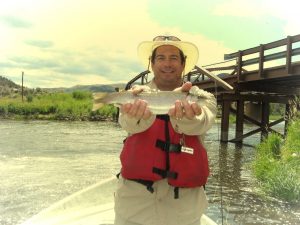Unlock the Secrets: Essential Trout Fishing Techniques for Success


Trout fishing is a captivating endeavor that draws anglers from around the globe to pristine waters in search of this elusive game fish. Whether you’re a novice casting your first line or an experienced angler aiming to refine your skills, understanding the fundamentals of trout fishing techniques can dramatically increase your success rate. This article explores various practical methods and tips to help you excel in trout fishing, ensuring each fishing trip yields rewarding experiences.
Understanding Trout Behavior
To fish effectively, it’s crucial to comprehend trout behavior and how environmental factors influence their activity. Trout are known for their sensitivity to water conditions, which can include temperature, clarity, and flow. They predominantly feed on insects, smaller fish, and aquatic invertebrates, making their diet a key consideration when choosing bait and lures.
Seasonal Patterns
Trout behavior varies with the seasons, which affects their feeding habits and location in the water. In spring, trout are often found in shallow waters, feeding aggressively as they recover from the sparse winter months. Summer brings higher water temperatures, causing trout to seek deeper, calmer waters during the hottest parts of the day. In the fall, as temperatures drop, trout become more active throughout the day and are found in varying depths. Understanding these patterns is crucial for deciding when to fish and what techniques to employ.
Essential Gear and Setup
Having the right gear is essential for successful trout fishing. This section covers the basic equipment needed and provides setup tips. A light to medium-light rod is ideal for trout fishing, providing the necessary flexibility and sensitivity. Pair this rod with a spinning reel for ease of use and better control. The reel should be spooled with thin, high-quality lines to remain inconspicuous to trout, which are often line-shy due to their keen eyesight.
Selecting the Best Fishing Line
Fluorocarbon lines are famous among trout anglers due to their near invisibility underwater and reduced stretch, which enhances sensitivity to bites. The line weight can vary depending on the fishing method and the trout species targeted, but generally, a 4-6 pound test line suffices for most trout fishing situations.
Bait and Lures: What Works Best
The trout species, water conditions, and personal preference often dictate the choice between live bait and artificial lures. Here’s a rundown of effective options. Worms, minnows, and insect larvae are highly effective baits for trout. When using live bait, it’s essential to present it as naturally as possible. Employing a basic float or using a weight to keep the bait near the bottom can be particularly effective, depending on the water depth and the trout’s location.
Artificial Lures
Artificial lures, such as spinners, spoons, and crankbaits, are designed to mimic trout’s prey. The lures’ reflective surfaces and movement attract trout and provoke strikes. Fly fishing with hand-tied flies that resemble local insects is another highly skilled yet rewarding approach to trout fishing.
Advanced Techniques
Drift fishing is a technique where the bait or lure is allowed to float downstream naturally with the current, presenting the bait in a lifelike manner to the trout. This technique is especially effective in rivers and streams where trout expect their food to come with the flow of water. Jigging involves casting a weighted lure and letting it sink to the bottom, then repeatedly lifting and dropping the rod tip to make the lure swim in an up-and-down motion. This mimics the movement of tiny aquatic creatures that trout feed on, often triggering an aggressive response.
Location, Location, Location
Choosing the right fishing spot is as crucial as the technique used. Trout prefer areas with abundant food sources and protective cover. Look for features like underwater structures, changes in water depth, and places where fast and slow currents meet. These areas are often hotspots for active trout.
Catch and Release Best Practices
Many anglers enjoy trout fishing for sport, practicing catch and release to sustain healthy populations. When practicing catch and release, it’s essential to handle trout as little as possible and use barbless hooks to minimize injury to the fish. Wet your hands before handling the trout to protect its mucous membrane, which guards against infection. Mastering trout fishing techniques requires patience, skill, and a deep understanding of the trout’s environment and habits. By equipping yourself with the right gear, choosing the appropriate bait and lures, and employing a variety of techniques, you can increase your chances of a successful catch. Remember, each fishing experience is a learning opportunity, and every day on the water enhances your skills and deepens your appreciation for this challenging and rewarding sport.

